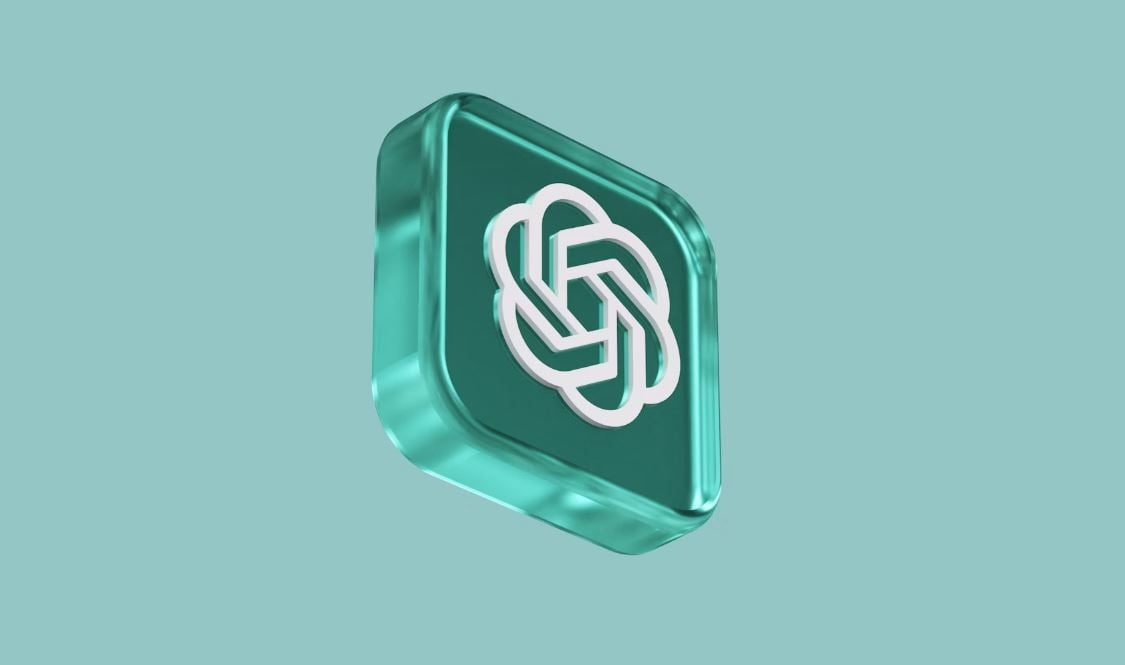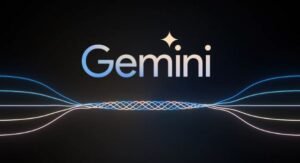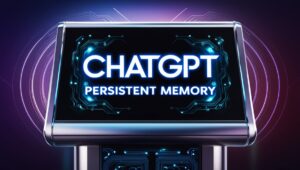In the realm of artificial intelligence (AI), language models have made significant strides in recent years. Among these, ChatGPT stands out as a powerful tool developed by OpenAI. ChatGPT is based on the GPT (Generative Pre-trained Transformer) architecture, which has revolutionized natural language processing (NLP) tasks. This comprehensive guide aims to provide an in-depth understanding of ChatGPT, its capabilities, applications, and practical usage.
What is ChatGPT?
ChatGPT is an AI language model developed by OpenAI. It utilizes deep learning techniques to generate human-like text responses based on input prompts. Built upon the transformer architecture, specifically GPT, ChatGPT excels in understanding and generating coherent and contextually relevant text.
How to access ChatGPT?
You can access ChatGPT simply by visiting chat.openai.com and creating an OpenAI account. Once you sign in, you can start chatting with ChatGPT by asking a question or instructing it to do something. You can ask as many questions as you like. You can also access ChatGPT inside your apps programmatically.
ChatGPT offers two main ways to access it programmatically:
OpenAI API:
This is the official method and requires an OpenAI API key. Here’s the basic process:
- Set up an OpenAI account and obtain an API key:
- Visit OpenAI’s website (https://openai.com/) and create an account.
- Navigate to the “API” section and generate an API key.
- Choose a programming language:
- OpenAI provides libraries for Python, Node.js, and Go. Choose the one that suits your needs.
- Install the OpenAI library:
- Follow the instructions provided by OpenAI for your chosen language.
- Write code to call the API:
- Use the library functions to send prompts to ChatGPT and receive responses.
- Refer to OpenAI’s documentation for specific examples and guidance.
Third-party libraries and frameworks:
Several libraries and frameworks offer unofficial access to ChatGPT, often through web scraping or browser automation techniques. These methods may be less reliable and violate OpenAI’s terms of service.
Important notes:
- Using the official OpenAI API is generally recommended due to its reliability and compliance with terms of service.
- Free access to the API has limited quotas. Consider paid plans for higher usage.
- Be mindful of ethical considerations when using ChatGPT programmatically, especially regarding data privacy and potential misuse.
Is ChatGPT free to use?
ChatGPT is free to use with ChatGPT 3.5 model but there is a premium version (ChatGPT Plus) available for the same.
For just $20 a month, you can upgrade to their premium subscription and enjoy these exclusive benefits:
- Never wait in line: Skip the queue and chat with ChatGPT anytime, even during peak hours.
- Experience the cutting edge: Gain access to the latest GPT-4 technology, delivering even more advanced responses.
- Get speedy replies: No more lag! Enjoy lightning-fast response times for seamless conversation.
- Connect to the world: Explore the web directly through ChatGPT with convenient plugin integration.
What is Chat GPT used for?
ChatGPT’s versatility has led to a diverse range of applications, encompassing both personal and professional use cases. Here are some prominent ways people are utilizing ChatGPT:
Personal Use:
- Creative Writing:
- Generating poems, scripts, musical pieces, and stories, sparking ideas and overcoming writer’s block.
- Experimenting with different writing styles and voices.
- Creating personalized greeting cards, emails, or social media posts.
- Learning & Education:
- Practicing conversation and language skills in different languages.
- Exploring complex topics in a conversational format, breaking down information for easier understanding.
- Generating study materials like summaries or flashcards.
- Entertainment & Play:
- Engaging in casual conversation on various topics, having fun and exploring different personalities.
- Playing games, like role-playing or creating interactive stories.
- Brainstorming ideas for hobbies, creative projects, or leisure activities.
Professional Use:
- Content Creation:
- Generating ideas and outlines for blog posts, articles, marketing copy, or social media content.
- Writing product descriptions, email newsletters, or website content.
- Translating content between languages.
- Customer Service:
- Answering common customer inquiries and providing initial support.
- Personalizing customer interactions and offering recommendations.
- Collecting feedback and improving customer service processes.
- Research & Development:
- Analyzing large datasets and identifying patterns or insights.
- Summarizing research papers or generating reports.
- Testing and refining hypotheses through simulated conversations.
- Coding assistance and suggestions.
Other Interesting Applications:
- Accessibility Tools:
- Assisting people with disabilities in communication and interaction.
- Generating alternative text descriptions for images or audio content.
- Providing emotional support and companionship.
- Personal Development:
- Practicing mindfulness and self-reflection through guided conversations.
- Exploring different perspectives and challenging personal biases.
- Setting goals and developing self-improvement strategies.
How Does ChatGPT Work Technically?
At its core, ChatGPT employs a transformer architecture, which comprises multiple layers of self-attention mechanisms and feedforward neural networks. During training, ChatGPT learns to predict the next word in a sequence given the context of previous words. This process enables it to understand and generate text based on the input it receives.
Is there an Android and IOS app for ChatGPT?
Yes, an official ChatGPT app is available for both iPhone and Android users. Make sure you are downloading the official version only by checking thoroughly as there are many fake applications in the stores.
Benefits of using ChatGPT
- Accessibility: ChatGPT is available for free, making it a valuable tool for individuals and organizations seeking to explore the potential of AI.
- Ease of Use: The user interface is simple and intuitive, making it easy for anyone to interact with ChatGPT regardless of technical expertise.
- Versatility: With its diverse capabilities, ChatGPT can be applied to various tasks across different industries and domains.
- Continuous Learning: ChatGPT is constantly learning and evolving, ensuring its responses remain relevant and up-to-date.
Limitations while using ChatGPT
- Information Accuracy: While ChatGPT strives to provide accurate information, it can give nonsensical answers and incorrect information, hence it’s crucial to verify its responses with trusted sources.
- Bias: As with any AI model, ChatGPT can exhibit biases based on its training data. Be mindful of this and interpret its responses critically.
- Ethical Use: It’s important to use ChatGPT responsibly and ethically, avoiding any misuse that could harm individuals or society. It rejects inappropriate requests as it can identify inappropriate submissions to prevent the generation of unsafe content.
- Data: ChatGPT’s data is limited up to 2021. The chatbot does not have an awareness of events or news that has occurred since then.
- Unrelated Responses: Instead of asking for clarification on ambiguous questions, the model just guesses what your question means, which can lead to unintended responses to questions.
“ChatGPT is at capacity” message when trying to access it
Even though ChatGPT can handle numerous users at a time, it reaches maximum capacity occasionally when there is an overload. This usually happens during peak hours, depending on the time zone.
If it is at capacity, try using it at different times or hit refresh on the browser. Another option is to upgrade to the paid ChatGPT Plus version, which is typically always available, even during high-demand periods.
What are the alternatives to ChatGPT?
Due to ChatGPT’s popularity, it is often unavailable due to capacity issues. Google announced Bard in response to ChatGPT. Google Bard will draw information directly from the internet to provide the latest information.
Microsoft added ChatGPT functionality to Bing, giving the internet search engine a chat mode for users. Bing chat isn’t as limited because its training is up to date and doesn’t end with 2021 data and events.
There are other text generator alternatives to ChatGPT, including the following (List does not follow any kind of order):
- AI-Writer.
- Article Forge.
- ChatSonic.
- Copysmith.
- DeepL Write.
- Google Bard.
- Jasper.
- Magic Write.
- Open Assistant.
- Peppertype.
- Perplexity AI.
- Spellbook.
- Rytr.
- YouChat.
Coding alternatives for ChatGPT include the following (List does not follow any kind of order):
- AlphaCode.
- Amazon CodeWhisperer.
- CodeStarter.
- CodeWP.
- Cody.
- Enzyme.
- Ghostwriter.
- GitHub Copilot.
- Mutable.ai.
- OpenAI Codex.
- Seek.
- Tabnine.
Will my conversations with ChatGPT be used for training?
Your conversations can be viewed by OpenAI and used as training data to refine its systems unless you have a Plus membership, so you shouldn’t enter any personal or private information into the chat window. The prompts you enter when you use ChatGPT are also permanently saved to your account unless you delete them. If you turn off your chat history, OpenAI will retain all conversations for 30 days before permanently deleting them to monitor for abuse.
What is GPT 4?
GPT-4 is the newest version of OpenAI’s language model system, and it is much more advanced than its predecessor GPT-3.5, which ChatGPT runs on.
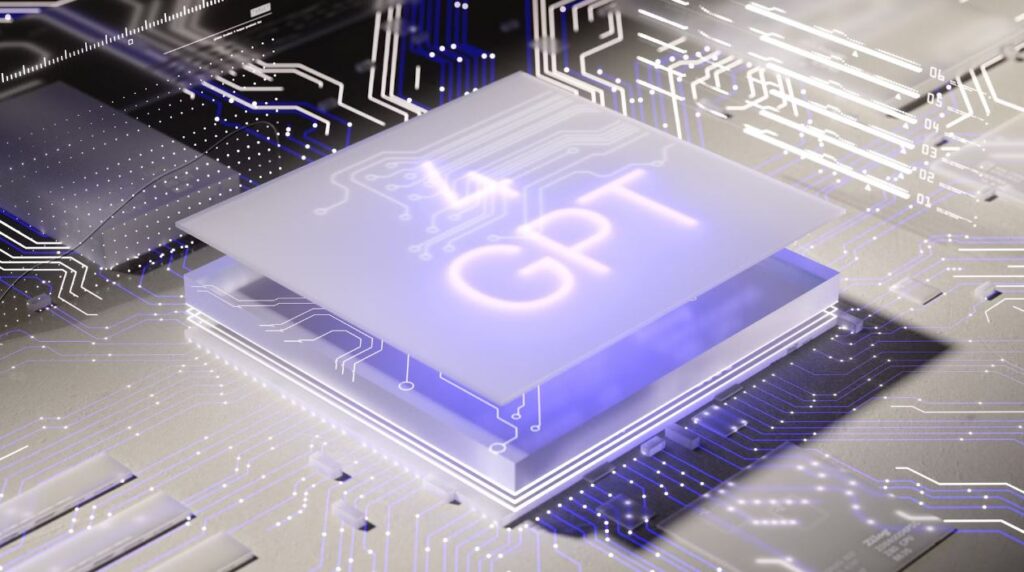
GPT-4 is a multimodal model that accepts both text and images as input, and it outputs text. This multimodal nature can be useful for uploading worksheets, graphs, and charts to be analyzed.
What are custom instructions?
You can increase the degree of customization for ChatGPT within your account by using custom instructions. This feature will give the AI chatbot context for each conversation, so it can respond according to your preferences, making it perfectly tailored to respond to you. If you’d like a certain degree of proficiency or professionalism in all of ChatGPT’s responses to your prompts, you can go to your account profile and change the custom instructions to reflect this.
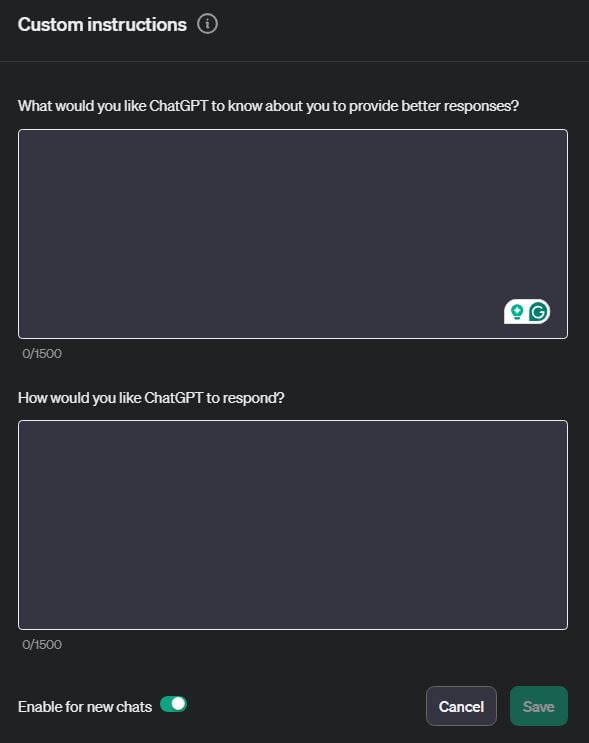
Who owns ChatGPT?
ChatGPT is owned by OpenAI, a research and development company specializing in artificial intelligence (AI). Founded in 2015, OpenAI aims to promote and develop friendly AI in a way that benefits humanity. While initially a non-profit organization, OpenAI transitioned to a for-profit structure in 2019 to secure sufficient funding for its ambitious research goals.
Here are some key details about OpenAI’s ownership:
- Founders: OpenAI was co-founded by several prominent figures, including Elon Musk, Ilya Sutskever, Greg Brockman, Sam Altman, and others.
- Governance: OpenAI is governed by a non-profit board of directors and a for-profit management team.
- Funding: OpenAI receives funding from various sources, including venture capitalists, philanthropists, and corporations like Microsoft. While Elon Musk stepped down from the board in 2018, Tesla and SpaceX remain involved as partners.
It’s important to note that the specific ownership structure of OpenAI is complex and has evolved over time. However, the core message remains: ChatGPT is developed and controlled by OpenAI, a company dedicated to responsible and beneficial advancement of AI technology.
